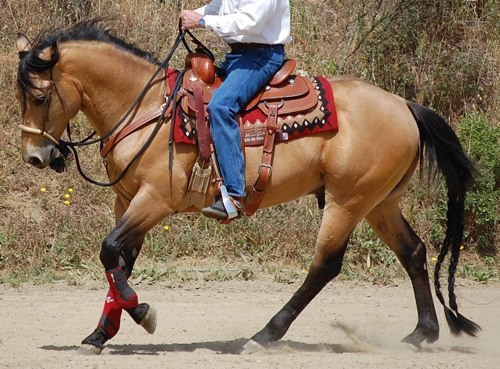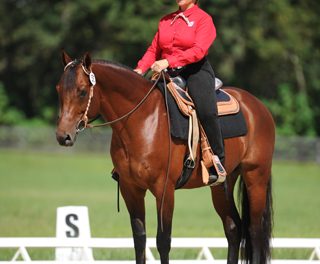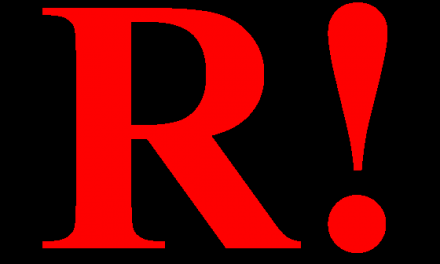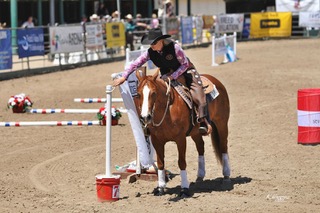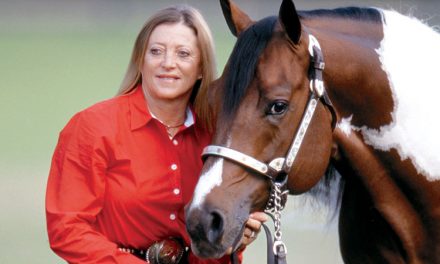 There have been many articles about western, or as I call it, cowboy dressage, by individuals well known in the western world. I think the interest in western dressage is a good thing but I also think that in a way people are missing an important point. The principles of dressage do not speak to what disciple you ride. The type of saddle, western or English, does not matter. The equitation is important but the principles are the core. This is one of the many things I learned when I rode with Major Miguel Travera. For three or four years I spent a good deal of time with him and what he impressed on me were the dressage principles. I have applied the principles I learned in those sessions ever since. Whether I am working a reining cow horse, an endurance horse or a horse used only for pleasure riding, the principles remain the same.
There have been many articles about western, or as I call it, cowboy dressage, by individuals well known in the western world. I think the interest in western dressage is a good thing but I also think that in a way people are missing an important point. The principles of dressage do not speak to what disciple you ride. The type of saddle, western or English, does not matter. The equitation is important but the principles are the core. This is one of the many things I learned when I rode with Major Miguel Travera. For three or four years I spent a good deal of time with him and what he impressed on me were the dressage principles. I have applied the principles I learned in those sessions ever since. Whether I am working a reining cow horse, an endurance horse or a horse used only for pleasure riding, the principles remain the same.
So, what are the all-important principles? The overall goal is self-carriage. To have self-carriage, a horse cannot be, what is commonly known as, behind the leg. The horse must be what we call forward. In other words, the movement of the horse must come from the rear. The engine that drives the horse forward is in the rear. The horse must step through under itself from the rear. Many times people misunderstand this and think, because a horse is moving forward at a good pace, it is forward. This not true as the horse may be strung out and pulling himself along. There may be a large distance between the rear and front legs. I have gone to many shows and have had a lot of dressage horses here at the ranch in training and I have seen that most are not developed to their full potential. Most of the horses I have seen are on the forehand and behind the leg. A horse with self-carriage is driving from behind and under himself in every gait.
Another important principle is that the horse must be obedient to the leg and rein cues given by the rider. For example, when you pick up a rein the horse should give and when you put a leg on the horse, it should yield. A few years ago, a friend of mine who is a dressage rider went to a Debbie MacDonald clinic up in Santa Rosa. There was an international judge and every participant was an exceptional rider, mostly fourth and grand prix level. The areas where they had the most problems were impulsion and the failure of the horses to respond to rein, seat and leg cues. Mainly, the horses were behind the leg, not obedient to the outside rein and not soft in the neck. These things are all very important regardless of what discipline you ride. To score high in dressage, horses that are shown at an upper level must be soft in the neck, rounded, on the bit and engaged.
One of the things I like about a reining competition is that when they judge a reining horse, the better horse has higher points because it is smooth in its delivery or execution. It is relaxed in the back, soft and supple. The same is true for dressage horses. The judges want a rhythm, cadence, and self-carriage.
Self-carriage comes along with training. Basically, the word “dressage” refers to a well-trained horse. We all have ideas about what a well-trained horse is but to me a well-trained horse is very obedient. You put on a leg and the horse yields. I know Stephen Peters and he is a great rider. His horses are all obedient, and respond to light cues. You can see in the horse’s body and facial expression that they are soft and listening to him. That is how we want our western horses to be.
So, it is more the principles and not the name of the discipline. Sometimes we get so involved in the exercise that we forget the basics. We can get our horses to do a haunches-in exercise but forget to have the horse moving under himself and wind up being totally heavy of the forehand. We can get our horses to do the shoulder-in exercise but because of our position or lack of impulsion the horse is dragging himself along. It is not the exercise but how it is performed. Also, it is not the exercise that trains the horse but your expectations and how you as the rider execute.
Another thing that is very important and what I like about dressage is the body position and balance of the riders. A lot of people have been around for a long time without ever understanding that our body position influences our execution. For example, many people have ridden for a long time but have never really understood the principles of body alignment of both themselves and their horses. When most people ask for a left lead, they look down at the horse and lean over the front. This automatically puts the horse out of balance. When you do this, you are putting weight on the inside front and side and that will throw the horse into an outside or right lead. I have seen this happen many, many times. Once we get our body alignment correct, and we are sitting on both seat bones and asking correctly without leaning forward or over, most of the time a horse that is obedient to the cues is going to pick the correct lead.
Not only do we have to have an obedient, well-trained horse, we have to be balanced and execute the exercises correctly. There are clinics that are excellent for getting a straight and balanced horse with self-carriage. Here at the ranch we are always conscious of our equitation when we ride but to help riders work on their seats, I have other trainers come in periodically so that my clients hear it in a different way.
I am all for dressage riding. Whether you ride English or western, there is nothing better than a horse that is soft, responsive to the leg, has cadence and rhythm of movement.
Charles Wilhelm

